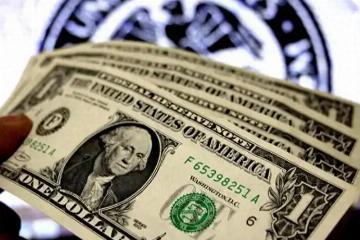- Finance
- November 5, 2024
- (121) comments
Breaking News from the Federal Reserve!
Advertisements
As the Federal Reserve approaches its December meeting amid a silence period, an intensified discourse among its officials has captivated the financial marketsTheir insights on interest rate cuts, inflationary threats, and the broader economic landscape have sparked significant interest among investorsGiven the imminent release of the November Consumer Price Index (CPI) data, market participants believe this could be pivotal in informing the Fed's policy trajectoryIn a climate still permeated by inflationary pressures and marked shifts in the labor market, the decisions rendered in December carry substantial weight.
First and foremost, inflation remains the Federal Reserve's primary concern.
On December 6, Federal Reserve Governor Michelle Bowman articulated that inflation in the United States significantly exceeds the 2% target, despite recent signs of slowing price increases
Advertisements
She expressed that any abrupt cuts to policy interest rates could unleash a surge of new investments, consequently exacerbating inflationary trendsTherefore, Bowman advocates for a cautious approach to rate cuts, emphasizing a gradual reduction towards neutral rates to avoid overstimulating the economy.
Additionally, Bowman underscored the robustness of the labor market, noting employment rates are near historical highsHowever, the prevailing inflationary landscape raises alarmsShe reiterated that the Fed's focus remains firmly on curbing inflation, and the current policy rates have yet to reach a restrictive level.
A multitude of perspectives from Federal Reserve officials.
Beyond Bowman, several colleagues have also weighed inCleveland Federal Reserve President Loretta Mester indicated that the Fed might be nearing neutral rates, suggesting a slowdown in the pace of interest rate cuts
Advertisements
She contended that the economy remains stable, but the reduction of housing-related inflation could take time, necessitating a patient approach to future policy adjustments.
Chicago Fed's President Austan Goolsbee emphasized that the Fed's actions would heavily depend on economic performance, particularly labor and inflation metricsHe anticipates a slower cadence of rate cuts in 2024, predicting that policy rates will stabilize by the end of next yearSimilarly, San Francisco Fed's Mary Daly exercised caution, noting that while the labor market is strong, the unpredictable pace of inflation's decline necessitates prudent decision-making in the face of uncertainty.
Contemplating the critical data: the U.SNovember CPI report.
Scheduled for December 17-18, the Federal Reserve's final meeting of the year is set against the backdrop of anticipated CPI data from November, which many analysts believe will have a lasting impact on the meeting's outcomes
Advertisements
The Chicago Mercantile Exchange's FedWatch Tool indicates that the market widely expects an 85.1% probability of a 25 basis point rate cut in this meeting, a significant uptick from the previous day's 71%. This CPI report may emerge as a decisive element in determining the extent of any potential cuts.
The projections suggest that the unadjusted year-on-year CPI for November could rise from 2.6% to 2.7%, with core CPI possibly holding steady in the tight range of 3.2%-3.3% for the sixth consecutive monthShould the data align with these forecasts, it would signal a stagnation in the anti-inflation efforts of the U.SFederal ReserveAnalysts warn that if inflationary pressures resurface, the Fed may adopt a more cautious approach in advancing interest rate cuts.
Understanding the complex signals within the U.Seconomy.
The backdrop for the Federal Reserve's decision-making is multifaceted, with the performance of the labor market yielding varying interpretations
- China Chips Away at Global Semiconductor Slump
- Japan's Semiconductor Industry: Can It Rebound?
- U.S. and European Markets Close Lower
- Is the U.S. Planning to Build a Bitcoin Reserve?
- Surge in Chinese Assets!
Recent data revealed an addition of 227,000 non-farm jobs in November, surpassing expectations and illustrating a resilient job marketHowever, the unemployment rate experienced an unexpected rise to 4.2%, exceeding analysts' forecasts and marking an increase from the prior month's 4.1%.
This duality reflects the labor market's nuanced situation: while job growth remains stable, the uptick in unemployment may signal underlying market pressuresIn this context, the Federal Reserve is faced with the challenging task of balancing inflation dynamics against employment trends.
The trajectory of interest rate cuts and their long-term implications.
The consensus among analysts points towards a prolonged trajectory of interest rate reductions extending into 2025, with a focused aim to achieve neutral rate levelsA recent report by Fitch Ratings emphasized that the resilience of U.S

consumer spending, alongside forthcoming tariff increases, could further escalate inflation risks, propelling the Fed towards a more measured pace in rate cuts next year.
Moreover, the potential implications of governmental policies, especially pertaining to tax reforms, are under scrutinyDeutsche Bank's forecasts suggest that tax cuts could amplify economic growth and spending, thereby intensifying inflationary pressuresThis would place an additional layer of complexity on the Federal Reserve's policy decisions.
Conclusion: Navigating cautious decisions amidst multifaceted signals.
The various signals emerging ahead of the Federal Reserve's December meeting reflect its policymaking being at a delicate junctureOn one hand, the inflationary risks and the intricate shifts within the labor market introduce a degree of uncertainty to policy adjustments